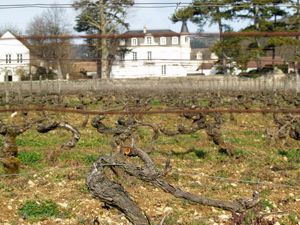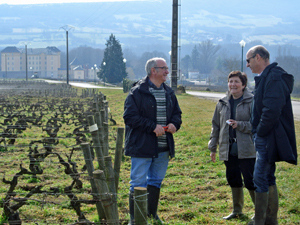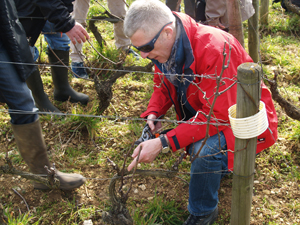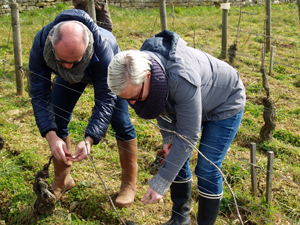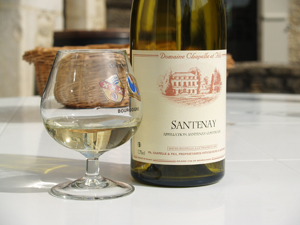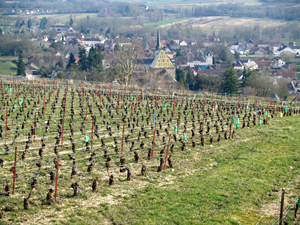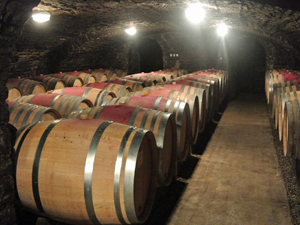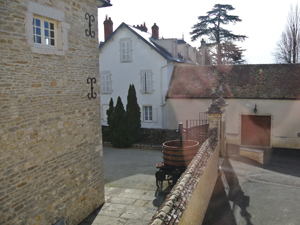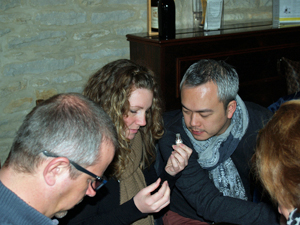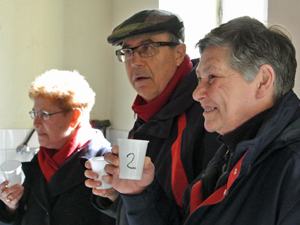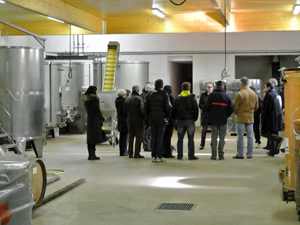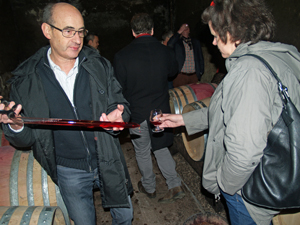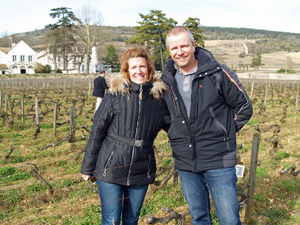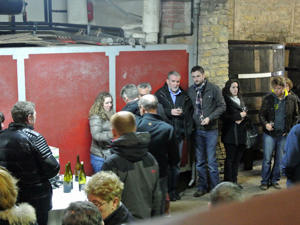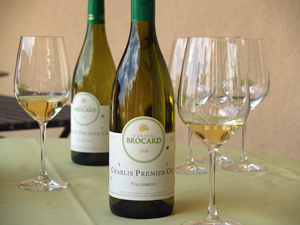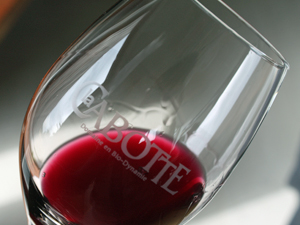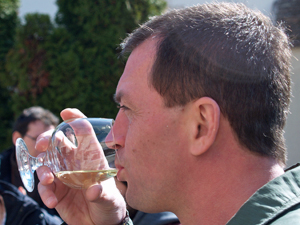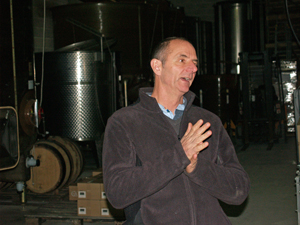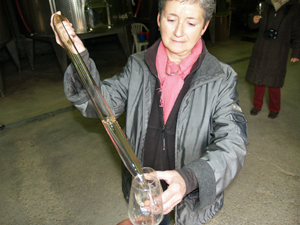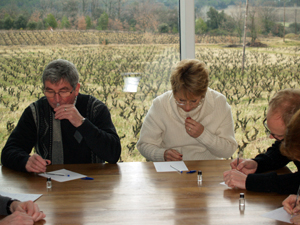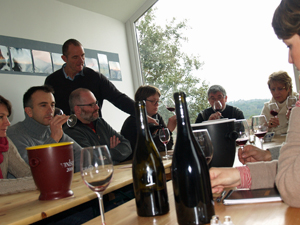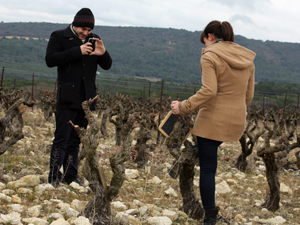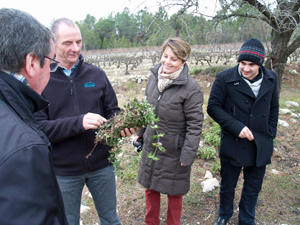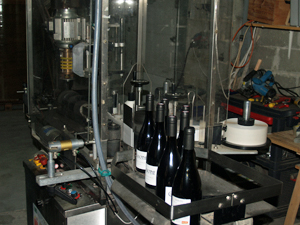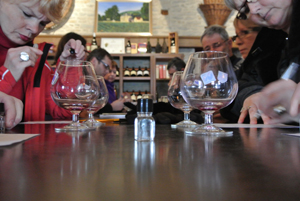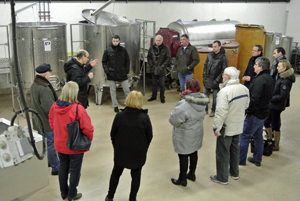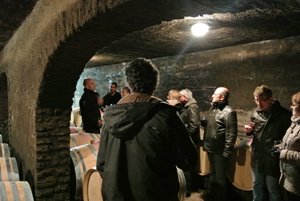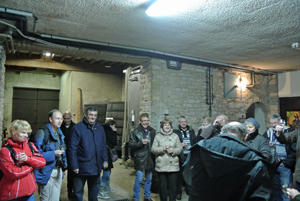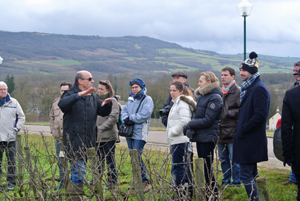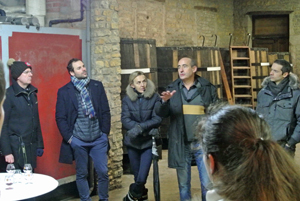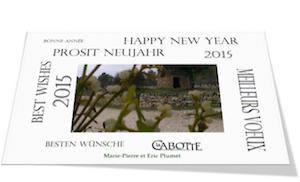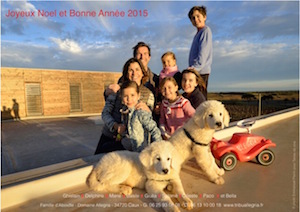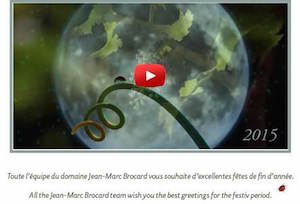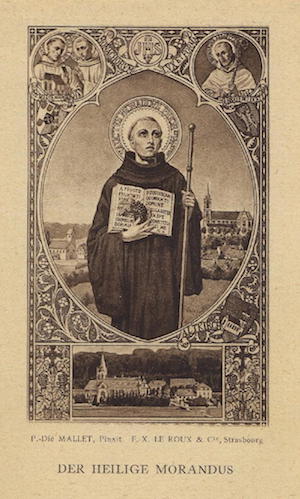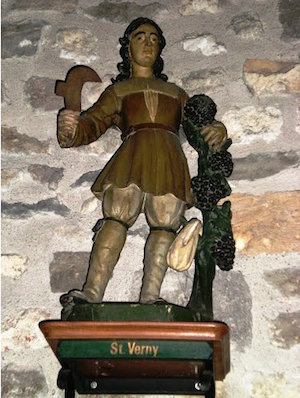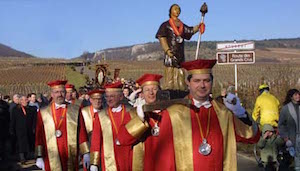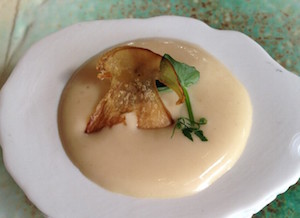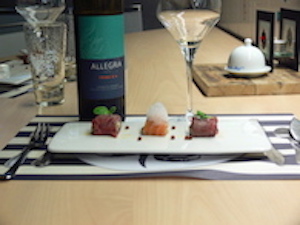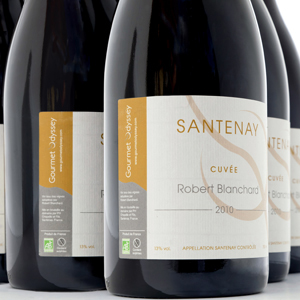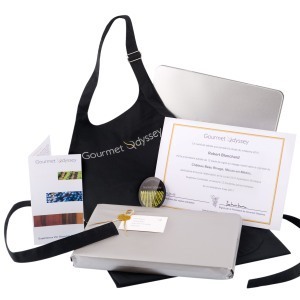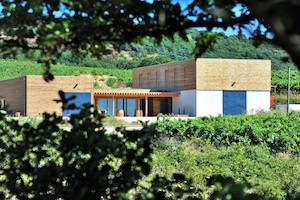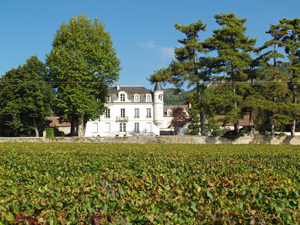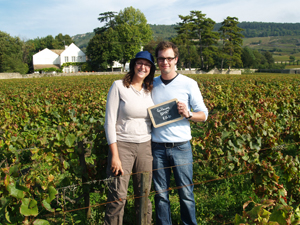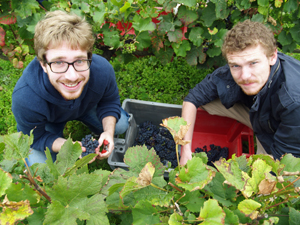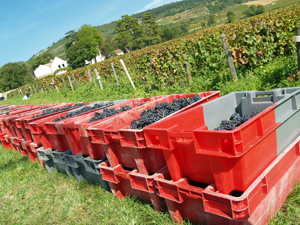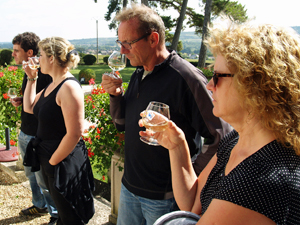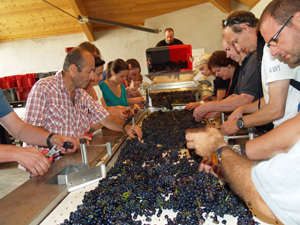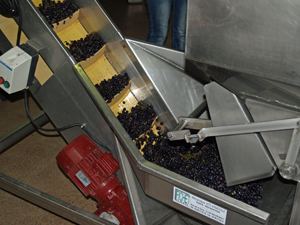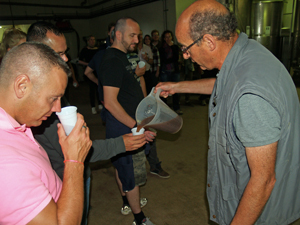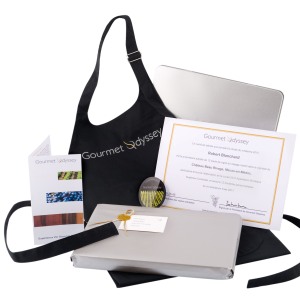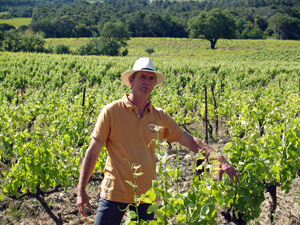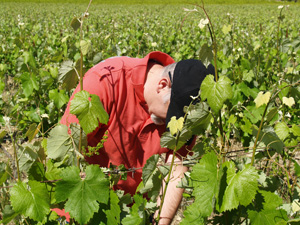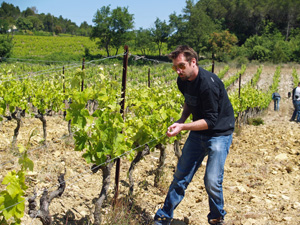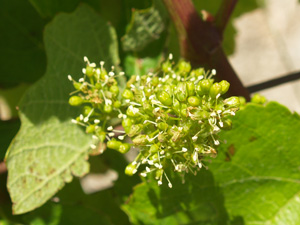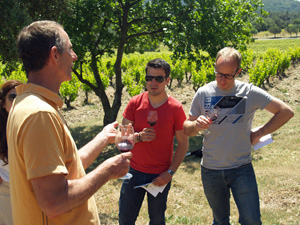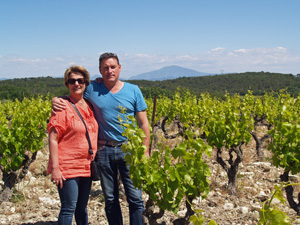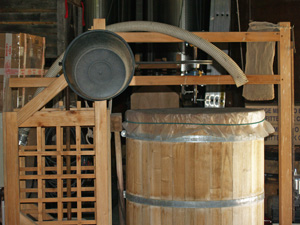Our host, Marc Plouzeau, introduced us to the winery and explained his long family connection to the estate. The winery's vineyards stretch across the left bank of the Vienne river, and include different terroir of gravel, clay and flint soils.
Having presented how the work is approached in the different vineyards, Marc gave us a sneak preview of his new range of labels which graphically represent this philosophy.
We then headed out into the Clos de la Bonnelière vineyard to meet our adopted vines for the first time!
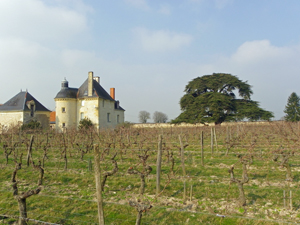
After a few photos for the "My Vine" photo competition, it was time to get down to some more serious work!
To warm us up, we started by pulling away some of the pruned branches. The vineyard had been pruned by Marc's team, but he had left us the task of stripping away the old wood to leave a clean space around the branches left to produce this year's harvest.
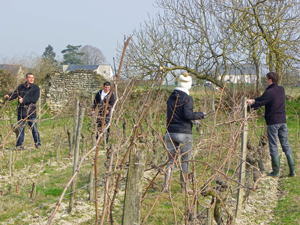
Marc also taught us how to prune using the "Guyot Simple" technique which is anything but simple!
Each vine is unique, so each needs a moment of reflection before the secateurs start snipping. We started by removing the branch that had produced last year's grapes. Then we needed to choose the new branch for this year, which is usually on the other side of the vine from last year's. We then cleaned up the branch to leave just 8 eyes, so as to reduce the number of grapes, and increase their sugar levels. To finish we left a shorter branch or "spur", which will then become next years fruit bearing branch.
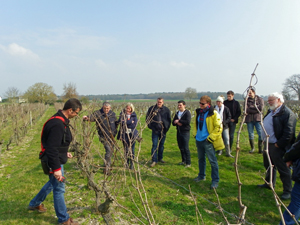
To end the morning's activities, Marc explained the next stages of working the vines until they are ready to be harvested, from de-budding, trimming and green harvesting. Each of these steps will help to control the future yield and produce better quality grapes.
We were then rewarded with a tasting of the wines from the château and a meal in the barn. We tasted a Touraine Sauvignon 2014 white wine with the fish terrine, a Chinon Rive Gauche 2014 and a Clos de la Bonnelière 2012 with the blanquette de veau. To finish in style we enjoyed a Chapelle 2012 with some local goat?s cheese, and the little treasure of the winery, the "Ante Phylloxéra" wine, which is made from a micro plot of vines that haven?t been grafted, and can be traced back for more than 200 years!
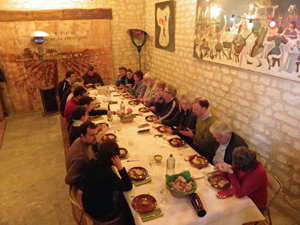
Despite some requests for a siesta after lunch, we continued the day by visiting the tool shed and learning about the machines and equipment which help Marc and his team work the vines organically.
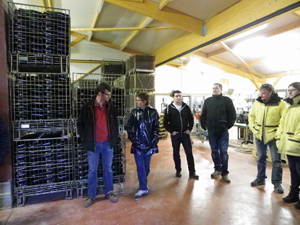
As the day drew to a close, we visited the fermentation hall, where Marc answered some of the last questions from our apprentice winemakers.
Many thanks to Marc and to all of the participants for a great day!



